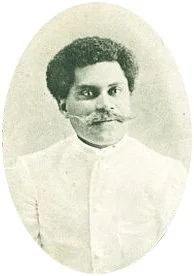About RKS
*
About RKS *
Ratu Kadavulevu School
Briefly
Ratu Kadavulevu School is a leading all-boys boarding school in Fiji, located in the lush landscapes of Lodoni, Tailevu on Viti Levu.
It has proudly been educating and nurturing Fijian boys to be well-rounded, outstanding men for 100 years, celebrating its Centennial Anniversary in 2024.
RKS focuses on developing excellence in character, academia and physical performance in its students.
It has a long tradition of producing students that have gone on to excel in various fields and industries in Fiji and across the world.
While it is a boarding school, it also offers in-zone classes to students from nearby communities and villages, including a handful of females every year.
RKS currently has 900 students enrolled in Form 3 to Form 7 and its Vocational Certification courses.
Strategic Vision
Ratu Kadavulevu School’s strategic vision is to unlock the academic, sporting, cultural and spiritual potential of all its students through excellence and best practices.
To achieve this, RKS aims to continuously provide a holistic and empowering education system that evolves and progresses but also maintains traditions that have stood the test of time.
To be an RKS scholar is to be a person of high standards, contributing diligently, effectively and with integrity to Fiji and to the community that he lives in.
History
Ratu Kadavulevu School evolved from the Provincial School Eastern (PSE), which was one of the provincial schools set up by Fiji’s colonial rulers to educate indigenous Fijian or i-Taukei students.
It is named after Ratu Penaia Kadavulevu, a Fijian chief who assumed the position of the paramount chief of the Kubuna confederacy, the Turaga na Vunivalu na Tui Kaba, after his father, Ratu Epeli Nailatikau, passed away in 1901.
Ratu Kadavulevu was educated in Australia and returned to Fiji with a keen interest and love for cricket and horse riding.
Legend has it that when he returned after his studies, he instructed the relocation of several homes on his island home, Bau, so he could erect a cricket pitch in the space they occupied. Today, that cricket pitch still stands in middle of the rara on Bau island.
Ratu Kadavulevu went on to represent Fiji in cricket and made six first-class appearances for the country in 1895, when his national team toured New Zealand.
As a keen horseman, Ratu Kadavulevu was the only one on Bau that was allowed to keep and ride his horses on the small chiefly island, with their water trough still sitting outside the current Vunivalu’s residence, Mataiwelagi, in Bau.
He regularly visited the villages under the Vunivalu’s jurisdiction on horseback, including a vast piece of land in Tailevu North that was gifted to him by the then Turaga na Ratu mai Verata.
The young chief was often accompanied on these visits by a close friend - an English man - and it was him who named the Vunivalu’s land, Lodoni, after his home city, London, in England.
At that time, the sons of chiefs from across Fiji were educated at Queen Victoria School in Nasinu, Suva, which the colonial administrators had set up to prioritise the training of the offspring of Fiji’s traditional leaders.
However, Ratu Kadavulevu saw the need to also educate others especially commoners in different trades and security services.
He personally supervised the tilling and conversion of Lodoni into the educational and training institution that would become the Provincial School Eastern, one which was open to all Fijian boys.
When WWII broke out, Fiji’s 3rd Battalion, Company C was made up of men from Lomaiviti and they were based in Lodoni, carrying out military training exercises on the base, including firearm practices along the sea shore.
As the war progressed, students of the Provincial School Western in Namaka, Nadi were relocated to two different locations to enable the conversion of their school to a military base for American and New Zealand forces present in Fiji then.
Those who hailed from the province of Ba were moved to Lodoni, where they also took up military cadet training as part of their studies.
Those from Nadroga/Navosa were moved to a new school in Sawani, Naitasiri, and it would become Adi Cakobau School (ACS).
Meanwhile, QVS students were relocated to Nanukuloa, Ra because their Nasinu school was converted to a military hospital.
Thus is the connection and close ties between the three top high schools in Fiji for indigenous Fijian students - RKS, QVS and ACS.
According to historical accounts, the relocation of indigenous Fijian students during this era was an ardours, traumatic and difficult experience for them, with some pulling out of school altogether as a result.
Conditions for Lodoni students in those days were tough and primitive by modern standards.
They lived in dormitories that had sparse walls made of woven bamboo materials; their daily meals consisted of gruel that often had worms and weevils swimming in it; the occasional loaf of bread was shared between four boys; and they had to clear acres of thick bushy land - with their bare hands and cane knives - for farmlands that would become the infamous Saiyaro Farm.
In 1947, PSE was renamed Ratu Kadavulevu Intermediate School in honour of its founder, who had passed on in 1914.
